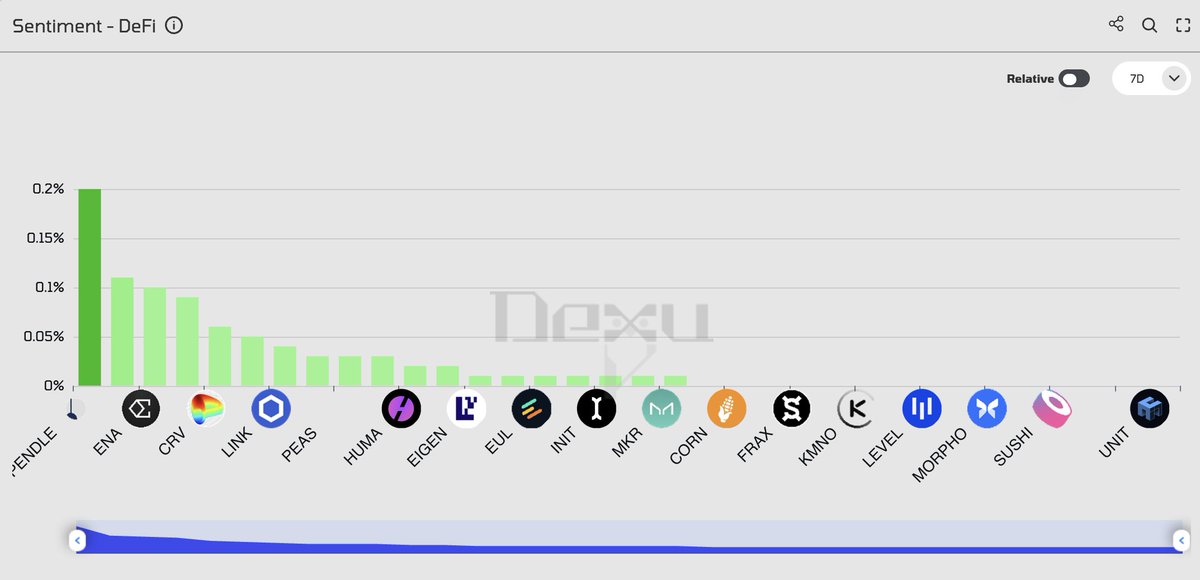Ціна Curve DAO Token
у USD

Про Curve DAO Token
Застереження
OKX не надає рекомендацій щодо інвестицій або активів. Ви повинні ретельно зважити, чи підходить вам торгувати цифровими активами чи утримувати їх, з огляду на свій фінансовий стан. Щодо ваших конкретних обставин порадьтеся з юридичним, податковим чи інвестиційним фахівцем. Щоб дізнатися більше, перегляньте наші Умови використання й Попередження про ризики. Використовуючи вебсайт третьої сторони (далі — «Сторонній вебсайт»), ви погоджуєтеся, що будь-яке використання Стороннього вебсайту регулюється умовами Стороннього вебсайту. Якщо це прямо не зазначено в письмовій формі, компанія OKX і її партнери (далі — OKX) жодним чином не пов’язані з власником або оператором Стороннього вебсайту. Ви погоджуєтеся, що OKX не несе відповідальності за жодні втрати, збитки й інші наслідки, що виникають у результаті вашого використання Стороннього вебсайту. Зверніть увагу, що використання Стороннього вебсайту може призвести до втрати або скорочення ваших активів. У деяких юрисдикціях продукт може бути недоступний.
Показники ціни Curve DAO Token
Curve DAO Token у соцмережах

Посібники

Створіть безкоштовний акаунт OKX.
Внесіть кошти на свій акаунт.
Виберіть криптовалюту.
Curve DAO Token — FAQ
Curve DAO керує Curve Finance, надаючи своїм користувачам можливість голосувати за найважливіші розробки проєкту. Однак, щоб голоси мали значення, користувачі повинні мати фінансову частку в проєкті.
Окрім можливостей управління, власники CRV можуть заробляти, видобуваючи ліквідність і беручи участь у стейкінгу. Крім того, вони отримують частину комісійних за транзакції.
Легко купуйте токени CRV на платформі OKX у криптовалюті. Доступні торгові пари в спот-торгівлі OKX включаютьCRV/BTC,CRV/USDCтаCRVUSDT.
Ви також можете купити CRV за більш ніж 99 традиційних валют, вибравши Експрес-покупка опціон. Інші популярні криптотокени, такі якБіткоїн (BTC),Tether (USDT)таUSD Coin (USDC), також доступні.
Або ж ви можете обміняти наявні у вас криптовалюти, зокремаXRP (XRP),Cardano (ADA),Solana (SOL)таChainlink (LINK), для CRV без жодних комісій і прослизання ціни за допомогоюКонвертація OKX.
Щоб переглянути приблизні ціни конвертації в реальному часі між традиційними валютами, такими як USD, EUR, GBP та інші, в CRV, перегляньтеКалькулятор конвертації криптовалют OKX. Криптобіржа OKX з високою ліквідністю забезпечує найкращі ціни для ваших покупок криптовалюти.
Дізнайтеся більше про криптовалюту Curve DAO Token
Curve Finance – це децентралізована біржа (DEX) для стейблкоїнів, що використовує автоматизованого маркет-мейкера (AMM) для управління ліквідністю. Унікальний підхід, що полягає у фокусуванні виключно на пулах ліквідності для стейблкоїнів та wrapped активів, таких як wBTC і tBTC, дозволив йому виділитися серед конкурентів. До другої половини 2020 року Curve Finance став провідним гравцем на ринку децентралізованих фінансів (DeFi). Підкреслюючи свою прихильність до децентралізації, у серпні він запустив власну децентралізовану автономну організацію (DAO), представивши CRV як свою нативну криптовалюту.
Що таке Curve DAO
Curve DAO, розроблений Curve Finance – це проєкт, який розширює можливості колективного прийняття рішень своєї спільноти. Ця DAO побудована з використанням інструменту Aragon від Ethereum, який об'єднує кілька смартконтрактів, необхідних для зберігання ліквідності. Власники токенів CRV можуть голосувати з питань, пов'язаних з проєктом, або пропонуючи зміни.
Команда Curve Finance
Curve Finance заснував Михайло Єгоров, який також є її генеральним директором. Досвідчений гравець у криптовалюті, Єгоров став співзасновником NuCypher у 2015 році та відіграв важливу роль у різних інших криптовалютних проєктах, включаючи децентралізований банк, відомий як LoanCoin.
Як працює Curve DAO
Токен управління CRV сприяє прийняттю рішень під керівництвом громади. Токени розподіляються на основі внеску в ліквідність і тривалості володіння, забезпечуючи справедливу систему, в якій більша кількість CRV трансформується в більш значну кількість голосів. Ця модель, яка заохочує фінансові зобов'язання, швидко стала стандартом DeFi, зміцнивши позицію Curve як DEX і сприяючи зростанню спільноти DAO.
Токеноміка CRV
Заснована 13 серпня 2020 року, CRV став відомим під час буму DeFi. Відображаючи тенденції індустрії, Curve Finance перейшла від управління спільнотою до структури DAO. Станом на липень 2023 року з 3,30 мільярдів випущених токенів CRV в обігу перебуває лише 871,7 мільйона. Основна функція CRV – сприяти управлінню спільнотою, хоча стейкінг і майнінг ліквідності також є важливими кейсами використання токена.
Розподіл CRV
CRV розподіляється наступним чином:
- 62% – постачальникам ліквідності
- 30% – акціонерам
- 3% – співробітникам проєкту
- 5% – зарезервовано для спільноти
Розкриття інформації про ESG









































